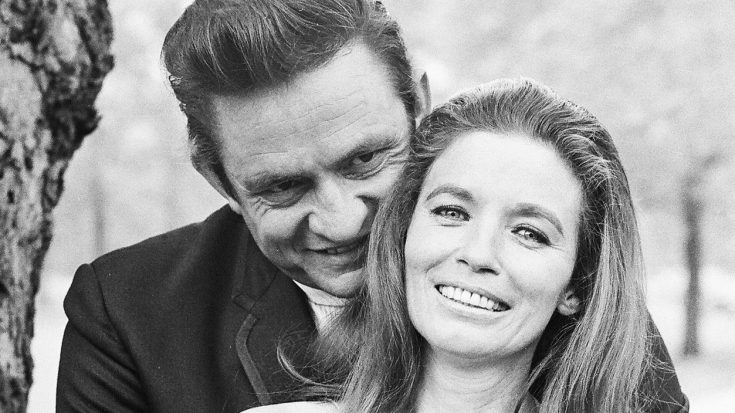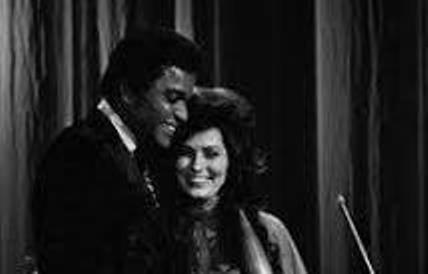|
Johnny Cash and June Carter were making out on stage.
They were preparing for an awards show in Nashville, enduring the long waits that are part of any rehearsal. What better way to pass the time? This was in the mid-‘70s, and they were already an old married couple, but they seemed like teen-agers falling in love. My wife happened to catch the eye of Ann Murray, the great Canadian singer, who was sitting nearby in an empty row. They both raised their eyebrows – but affectionately -- as if to say, “Get a room.” I was thinking of this Sunday night during the latest episode of “Country Music,” the ongoing series from Ken Burns. The documentary may be a bit pat about racial and class divides and too formulaic about the terrible stresses of the ‘60s, but Burns has captured some of the personal statements of hope and change. Sunday’s two hours focused on the mid-‘60s, as a time of change, not only in country music but at lunch counters and marches in the South and campuses and towns all over America. Country music’s changes included Loretta Lynn’s song “The Pill,” banned for a while by some chicken radio stations, and Charlie Pride’s acceptance as a black star who sounded white. The series says that Loretta was the presenter for the top male award in country music, and was told to keep her distance if Pride were the winner. However, when they met on stage, she moved forward and gave him a hug and a kiss. Part Cherokee, Loretta was not going to let people tell her what to do in matters of race and color (or anything.) In her book, Loretta says it happened in 1972 when she won the Entertainer of the Year Award. “People warned me not to kiss Charley in case I won, because it would hurt my popularity with country fans. I heard that one girl singer got canceled out Down South after giving a little peck to a black friend on television. Well, Charley Pride is one of my favorite people in country music, and I got so mad that when I won I made sure I gave him a big old hug and a kiss right on camera. You know what? Nobody canceled on me. If they had, fine. I’d have gone home to my babies and canned some string beans and the heck with them all.” – “Coal Miner’s Daughter,” by Loretta Lynn, with George Vecsey. Other examples of ‘60s change were Dolly Parton, with her songs and her brains and her looks, willing herself up from East Tennessee poverty, and Merle Haggard, with his Warren Beatty looks and Bakersfield twang, overcoming his time in prison. The most compelling figure in Sunday’s episode was Johnny Cash, with his childhood of deprivation from money and love, discovering his talent, and his feel for injustice. In the’60s, while males in Nashville were wearing Nudie’s of Hollywood peacock outfits, Cash wore only black, to show support for the underdogs, but the color was also an expression of his moods. The series shows Cash blowing up his marriage for his passion for June Carter, but also getting deep into drugs. One live sequence shows him fidgeting at a recording session, twisting and turning, grimacing, removing his shoes, just out of his mind. In one live performance, Mother Maybelle Carter, singing backup, watches him warily, knowing that at any moment she and her daughters might have to scrape him up off the floor. That segment ought to be an advertisement for just about any human on legal alcohol or illegal ”recreational” or or the pain-killers doctors and big pharma push on people. Cash was zonked. Burns did not cite the song that Nick Lowe, Cash’s son-in-law at the time, wrote about Cash, who fine-tuned it into a standard: “The Beast in Me.” ….the beast in me That everybody knows They've seen him out dressed in my clothes Patently unclear If it's New York or New Year God help the beast in me… When I was working on Barbara Mandrell’s book, she told how as a precocious teen-ager she traveled with the Cash entourage, and was treated respectfully, but she also recalled Cash in a diner, nervously picking the stuffing out of a Naugahyde booth, just a bundle of nerves. The Sunday episode stressed personal revival, finishing in Folsom Prison, where Cash recorded his epic album, cracking jokes that the inmates got. He never had a better audience. There is a touching moment at the end where he performs a song written by one of the prisoners, and shakes his hand. I will vouch for the feeling Cash gave of a transformed – saved -- man, after he sought help for his addictions. In 1973, I interviewed him and June Carter in New York, upon the opening of a movie they had made about the life and death of Christ. He was calm, reflective, and they were deeply in love. Johnny Cash still wore black. Having met him a few times, I am sure he would be wearing it today. **** The back story to “The Beast in Me:” https://americansongwriter.com/2018/08/nick-lowe-the-beast-in-me/ *** My other memory of that rehearsal at the new theme park in the mid-‘70s, after the Opry had deserted its spiritual home, the Ryman Auditorium: Mooney Lynn (Loretta’s husband and my pal) and Roy Clark, the sweet-voiced troubadour, partaking of the upscale snacks, praising the hot and flaky hors d'oeuvre, which they lustily praised as “egg pie.” Quiche, that is. (They knew that. This is why I love country.)
bruce
9/24/2019 12:46:19 am
george,
George Vecsey
9/24/2019 11:02:55 am
Bruce: Rosanne Cash is one very smart lady. I love her comments throughout this series
bruce
9/24/2019 12:05:45 pm
george,
Altenir Silva
9/24/2019 03:22:04 am
Dear George,
George Vecsey
9/24/2019 11:07:35 am
Altenir: Thanks. Funny twist of words...destiny changed her life?
Altenir Silva
9/24/2019 02:12:17 pm
Dear George, 9/24/2019 05:18:04 pm
"The Coal Miner's Daughter was a great movie, but George's book is a must read if you want the full flavor of Loretta Lynn's life.
George Vecsey
9/25/2019 10:52:30 am
Alan, thanks, I've never listened to it, but Spacek was so nice at the opening of the film. They had "openings" in Nashville and Louisville back-to-back and she...and Levon Helm....sang with Loretta at a party.
bruce
9/25/2019 09:55:21 pm
george, Comments are closed.
|
Categories
All
|











